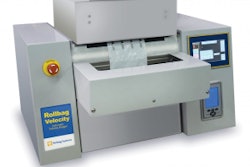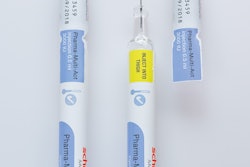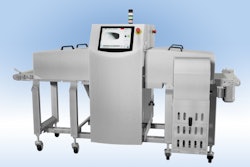
Historically, pharmaceutical manufacturers and contract service organizations have collected mountains of data, but the industry as a whole has been averse to sharing that data in meaningful ways. But as technology advances, the industry can take cues from other sectors and put that big data to work to drive performance.
New strategies, processes, mindsets and skills will help companies evolve from hindsight to insight, and eventually to foresight for predictive modeling. What if you could use algorithms to optimize the planning of equipment turnaround and setup to increase production capacity? Or improve demand/supply planning with an in-memory database to update replenishment plans accurately in days instead of weeks?
At this week’s PDA Annual Meeting in Anaheim, CA, Michele D’Alessandro, Vice President and Chief Information Officer at Merck & Company, and Adam Fermier, PhD, Scientific Director, PDMS, Janssen Pharmaceuticals R&D, offered the following tips about the exciting possibilities and how to move toward predictive analysis.
-
D’Alessandro said that one key is to think about exposing data in its current state, and allowing that spotlight to be the impetus to improve quality. While this may be counterintuitive to the attitudes of many in the pharma industry, treating data as an asset and advancing business processes are guiding principles at Merck.
-
“Don't approach it as an IT problem,” Fermier explained. Of course, you must bring in IT to help you find what you’ve defined you need. But to shape superior design, he recommended companies include engineers, scientists, mathematicians, IT and arts experts (think STEAM, not just STEM). Though the arts are often overlooked in this field, “the art” is an important part in shaping the design of the solution so that it is easy to consume and interact with to make informed decisions.
-
Along those same lines, ensure you have enough data scientists to develop meaningful analysis as well as manufacturing science experts who know what insights to coax from the data.
-
Consider innovative places for the data to go. Fermier noted that at times, despite sophisticated data collection, the data may end up “somewhere not as mature,” such as PowerPoint or Word. The good news, he said, is that up-and-coming engineers and designers often enjoy more of a social approach to data with newer tools that facilitate communication and conversation. “The first model doesn’t give you an answer,” he explained. You have to build ongoing analysis into your operations in order to start learning over time.
-
Look outside your industry. “One of the things that frustrates me: we look within pharma to find pharma solutions.” Fermier suggested that you read engineering books around big data and analysis—which often have the added bonus of being concise. He recommended the following: Totally Integrated Enterprises (Raytheon Professional Services, LLC), Ontological Semantics (MIT Press), Applied Predictive Modeling (Springer), and Scientific and Statistical Database Management (Springer).
Other sectors have been much quicker to embrace “Industrie 4.0” or the Industrial Internet of Things (IIoT), so the healthcare industry has some examples to follow. Both speakers stressed the need for industry collaboration and mentioned that they are open to having conversations around big data strategies.
Implementing innovative strategies at Merck “has led to significant business outcomes. But the important thing is that it’s bringing an insight-driven culture to our manufacturing environment,” said D’Alessandro. Making discoveries and subsequent changes used to take months, but improvement can come much more rapidly now. “It’s not just data at the shop floor, it’s insight at the shop floor.”






















